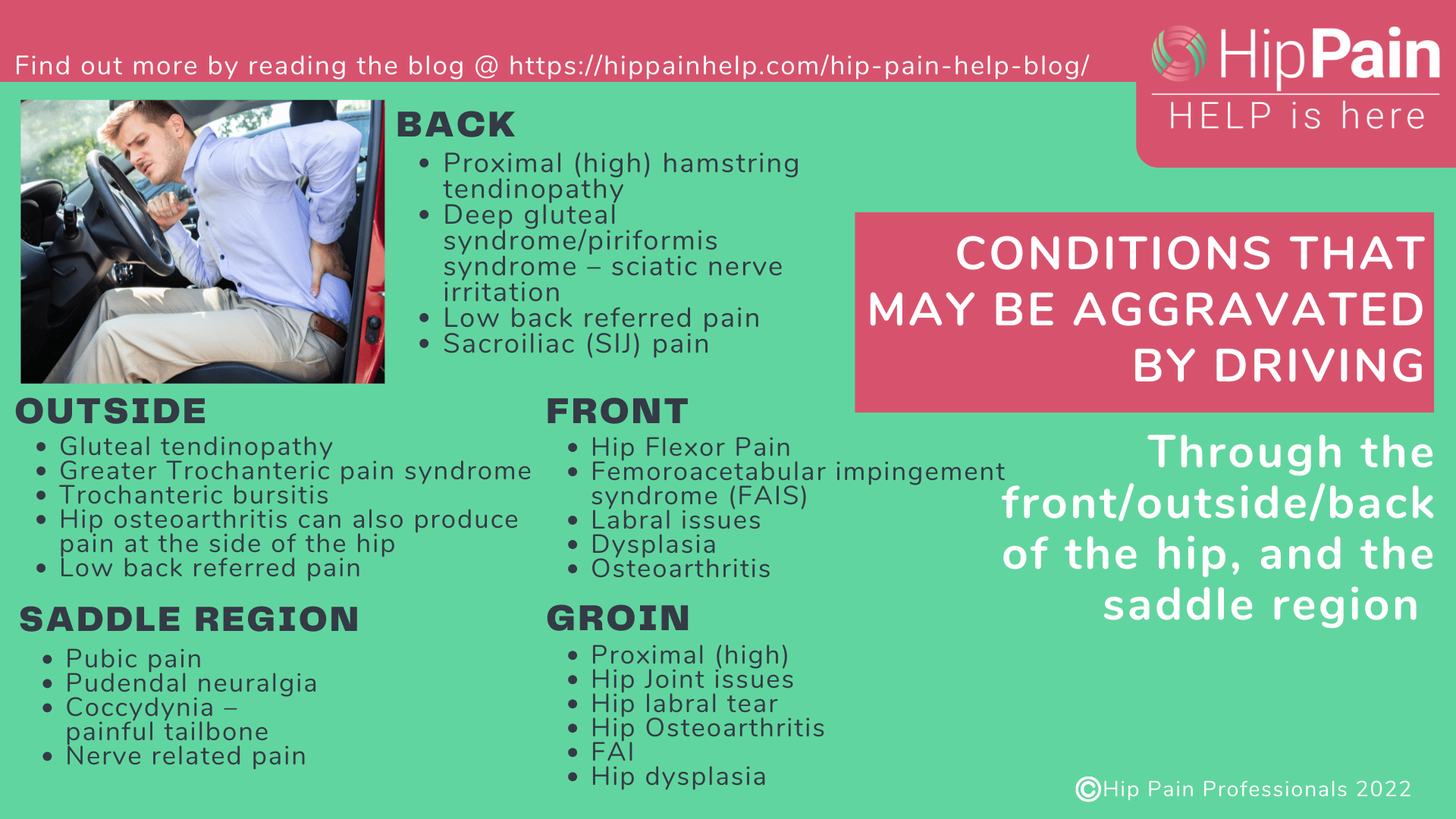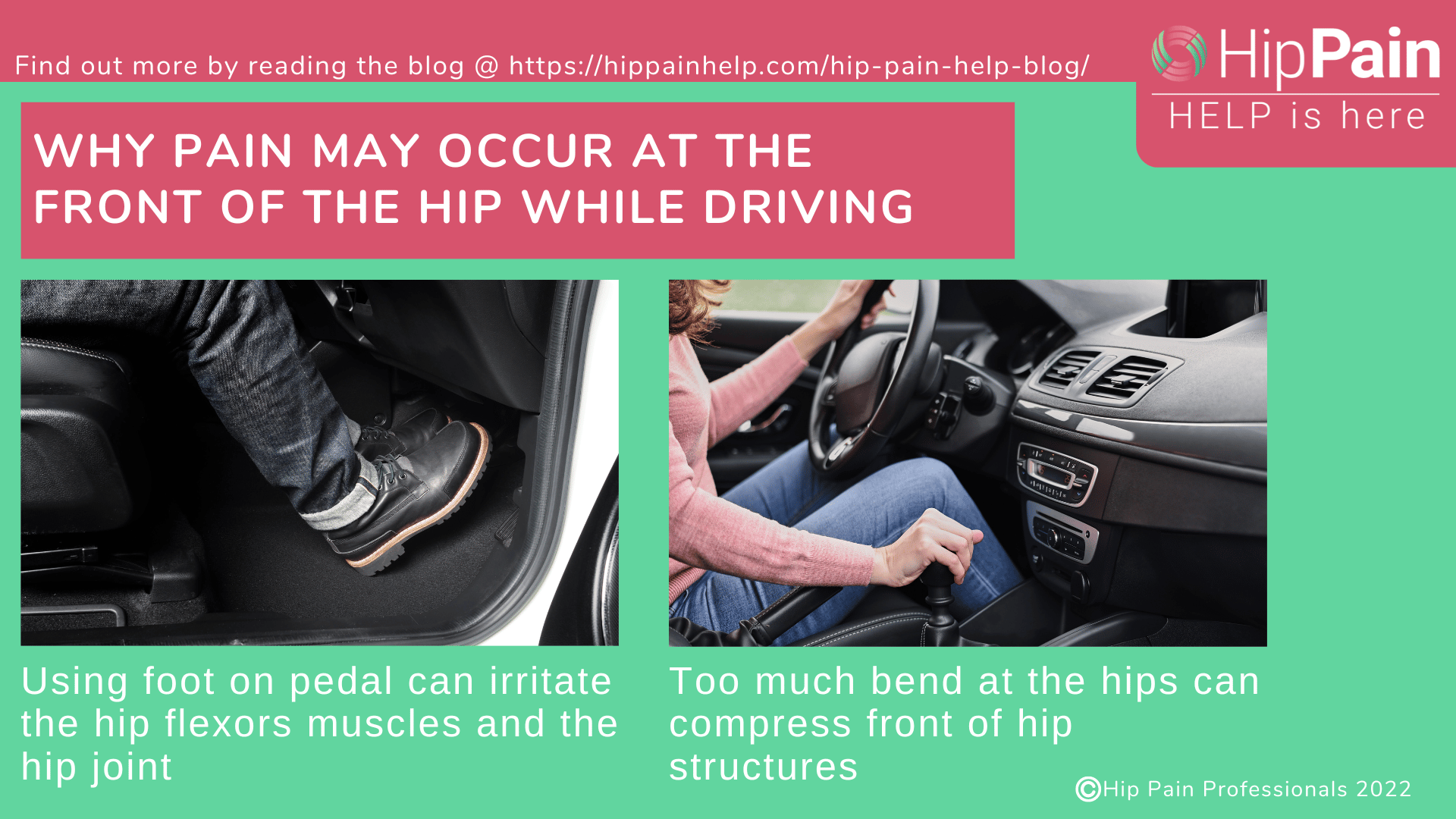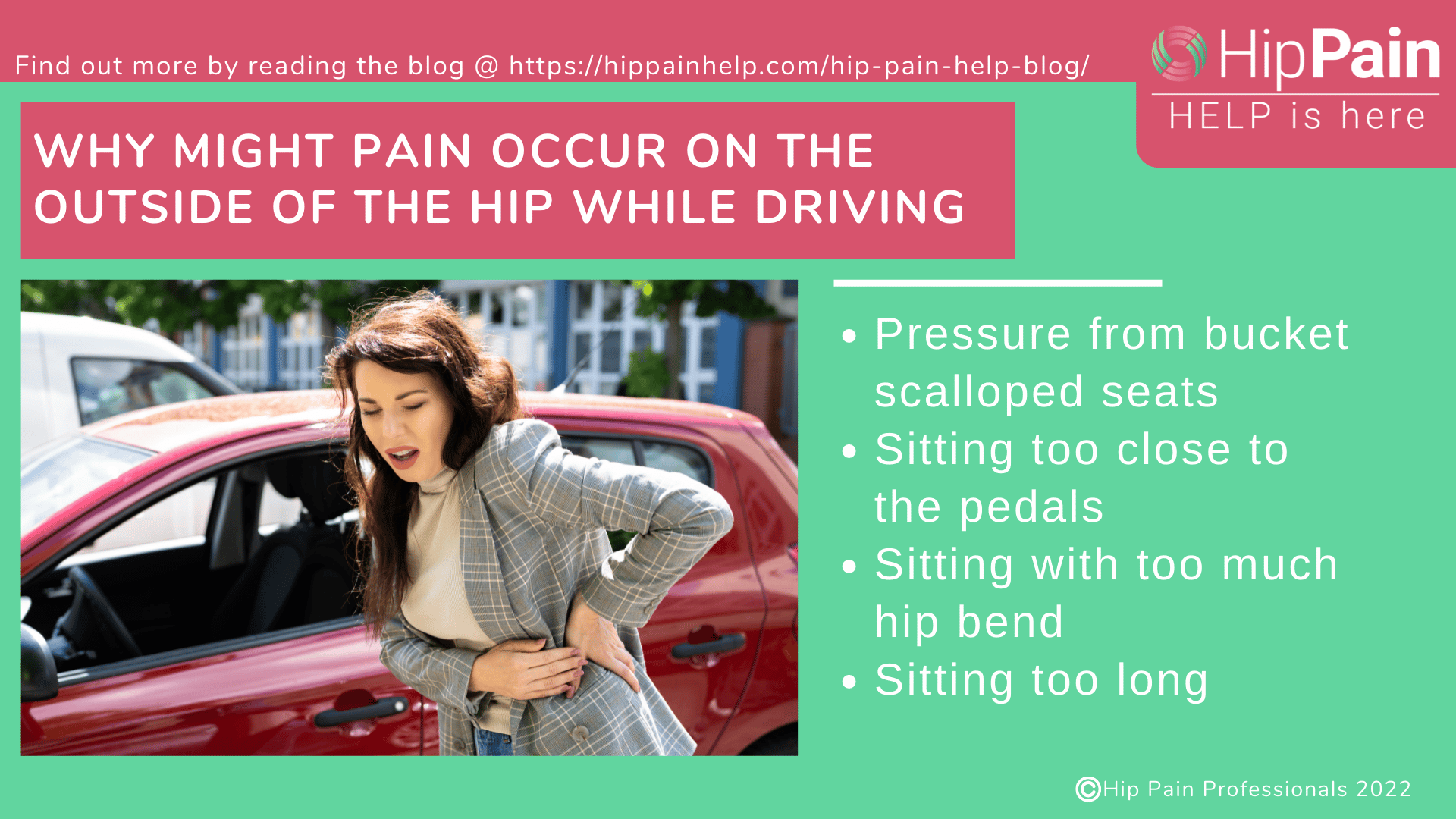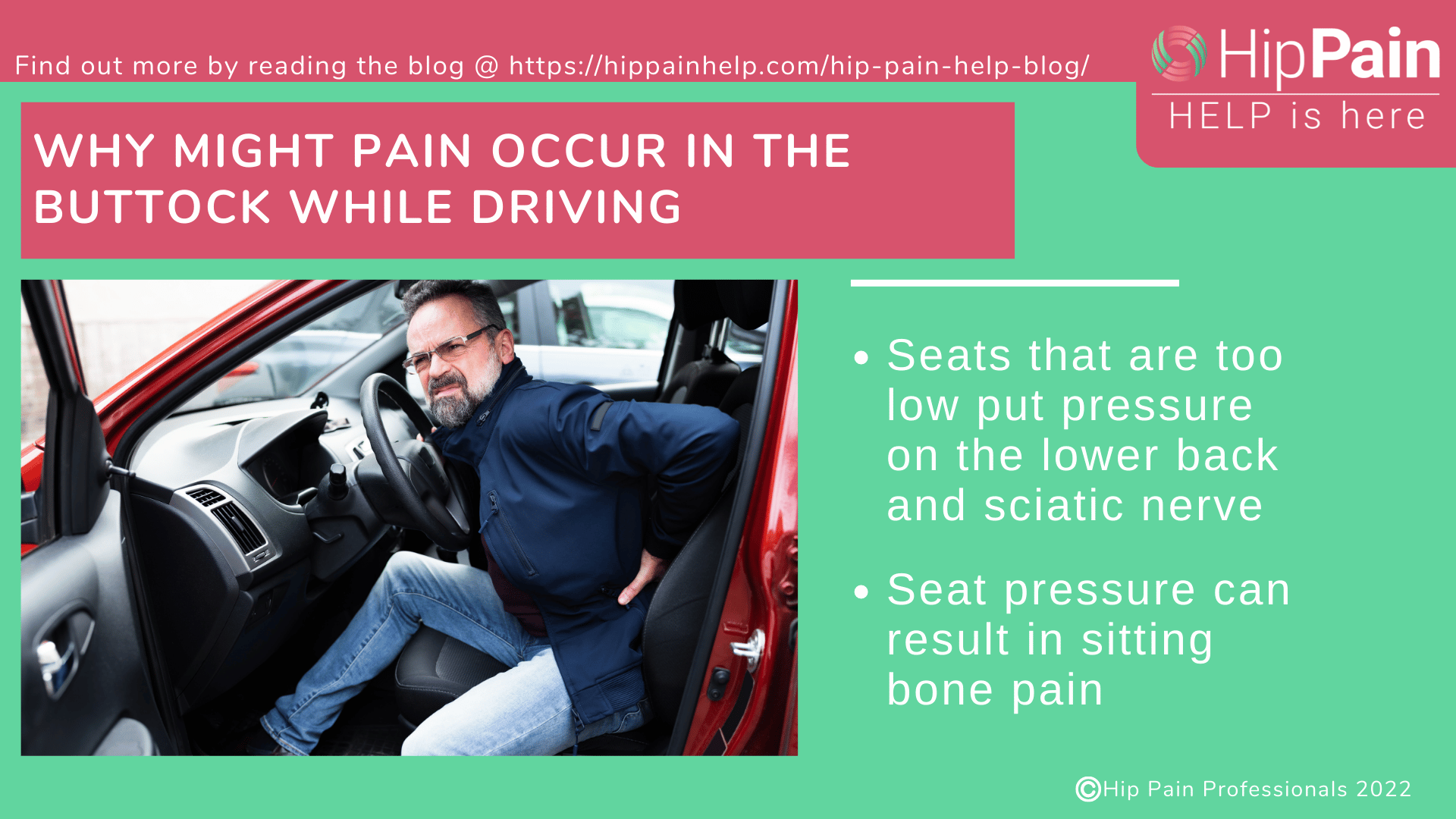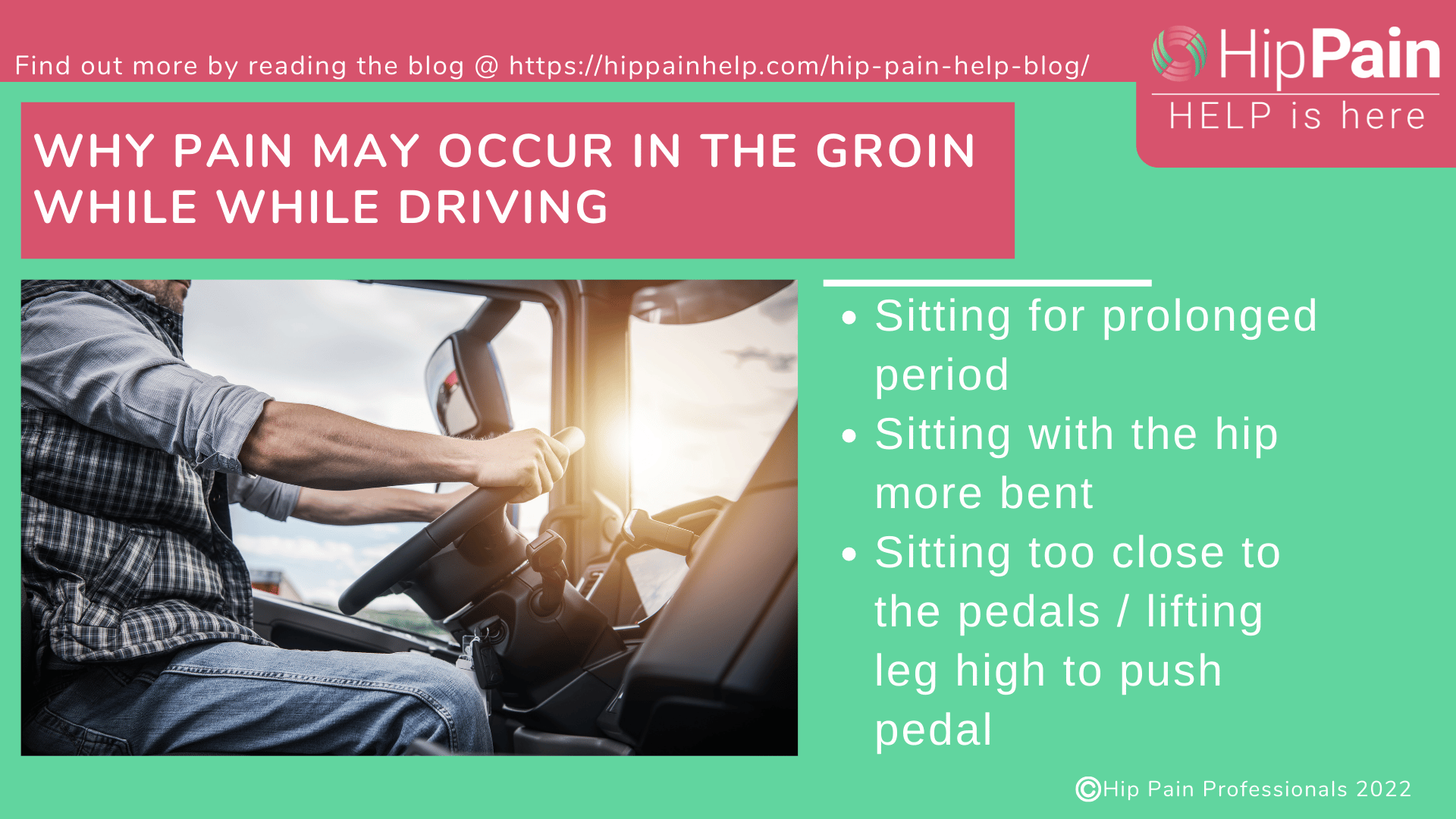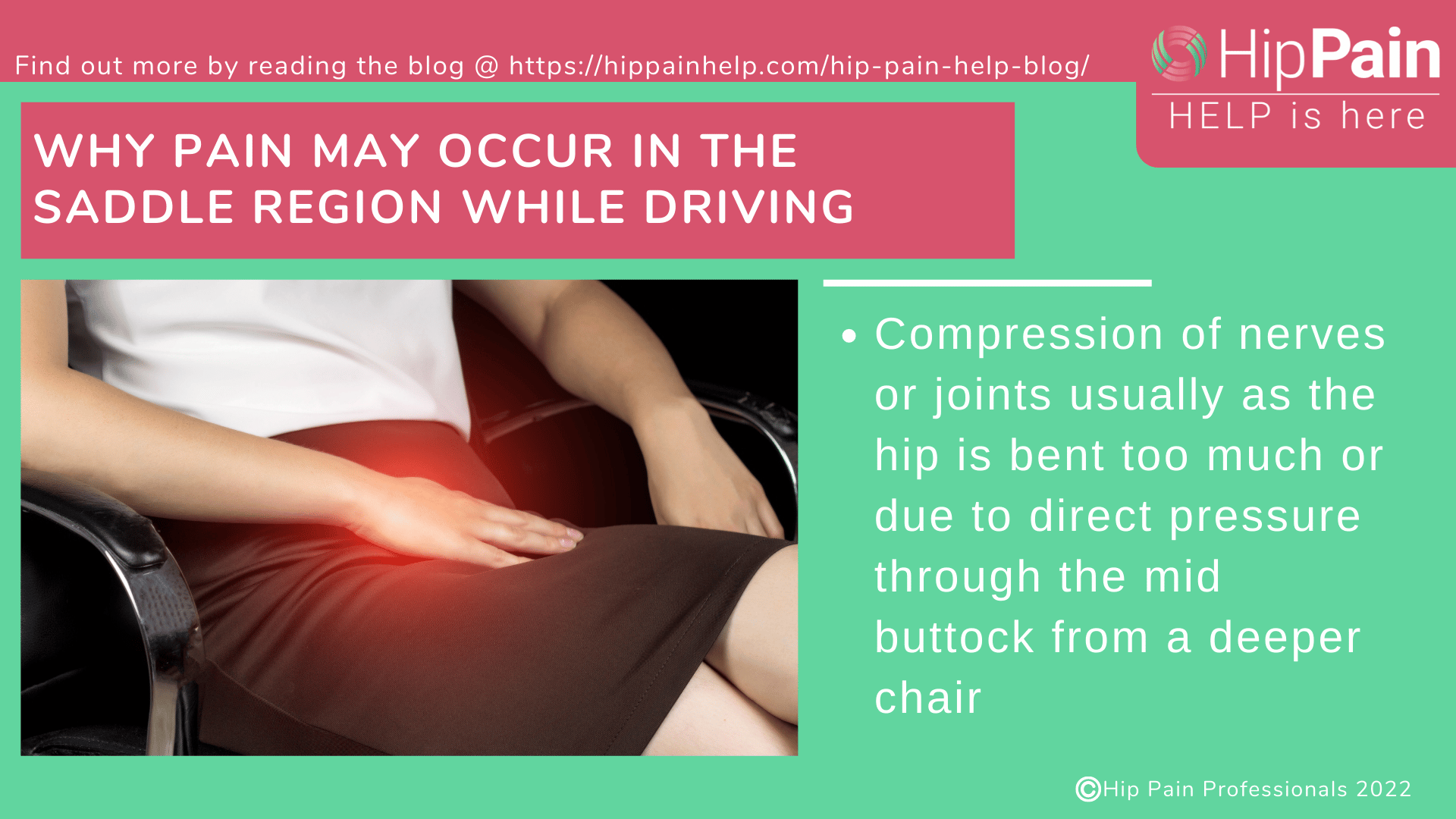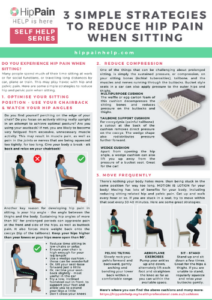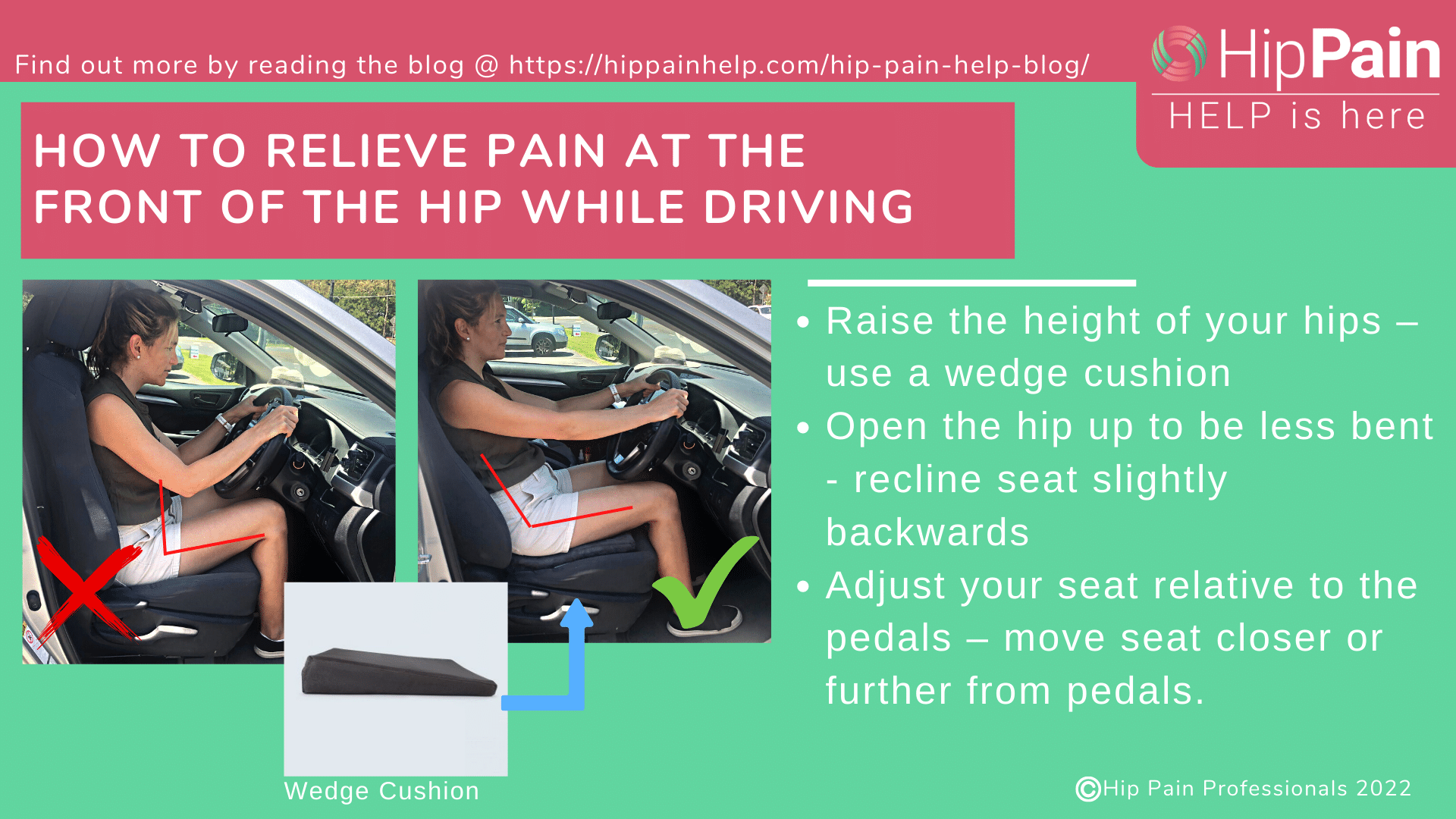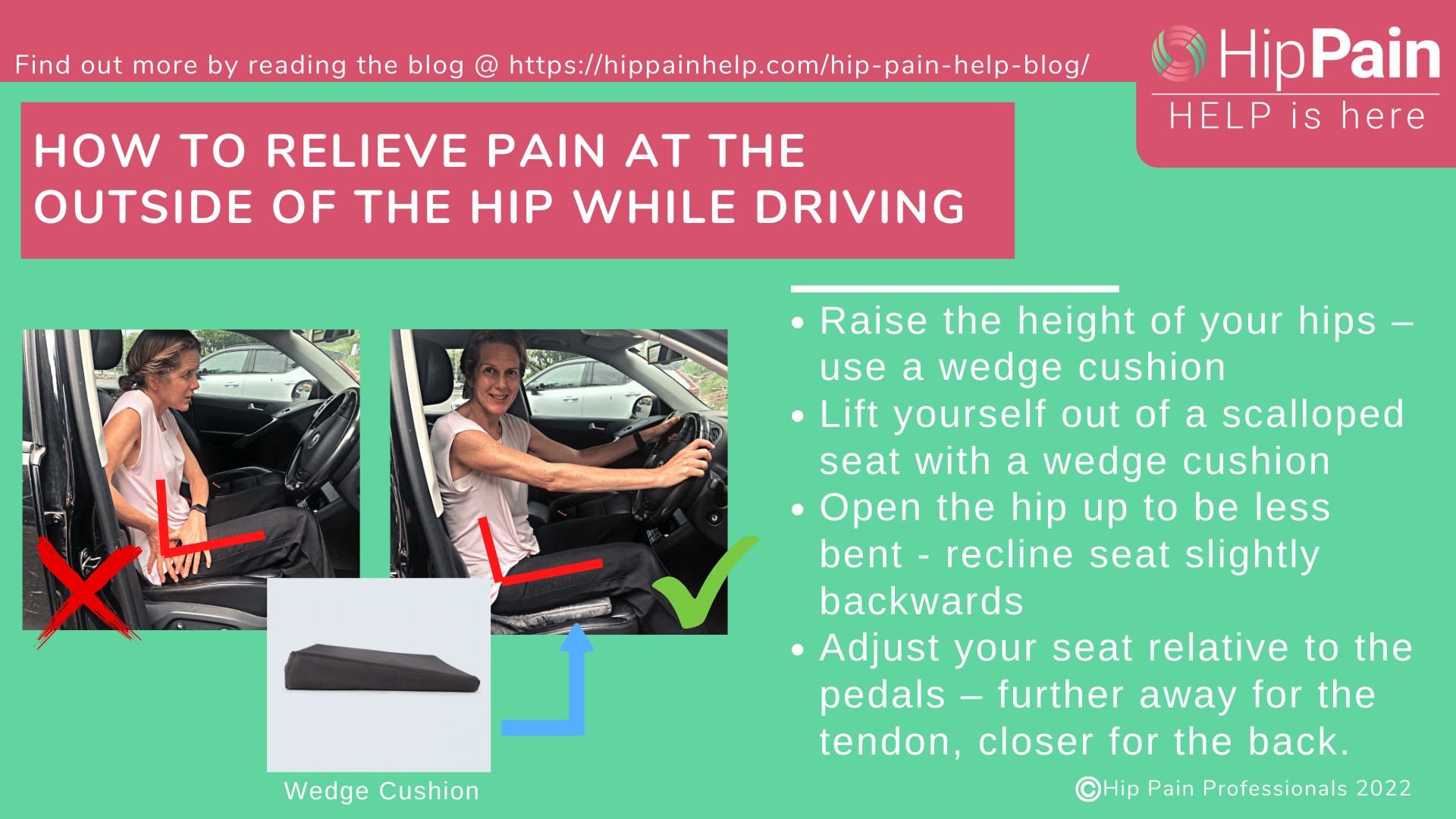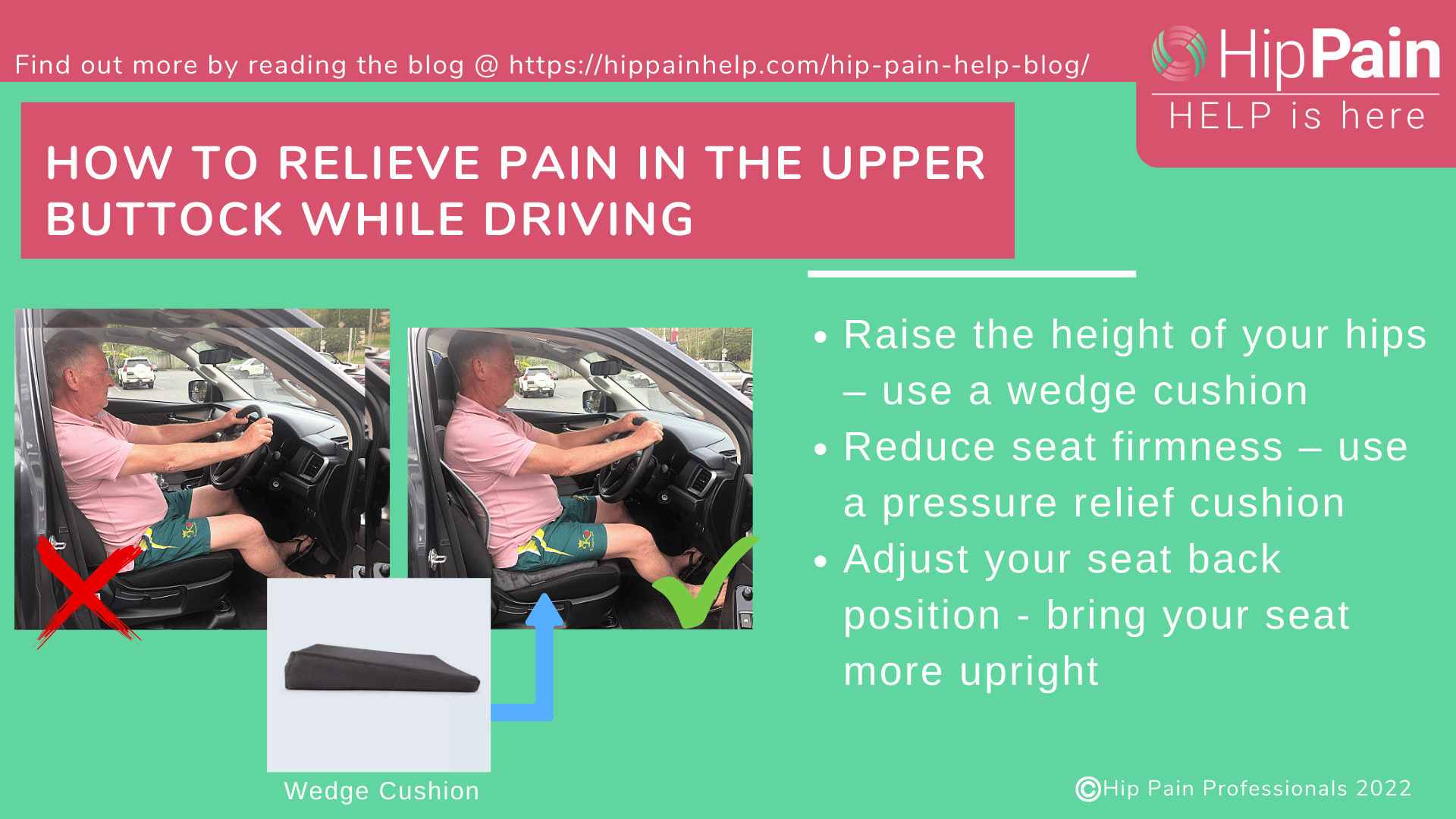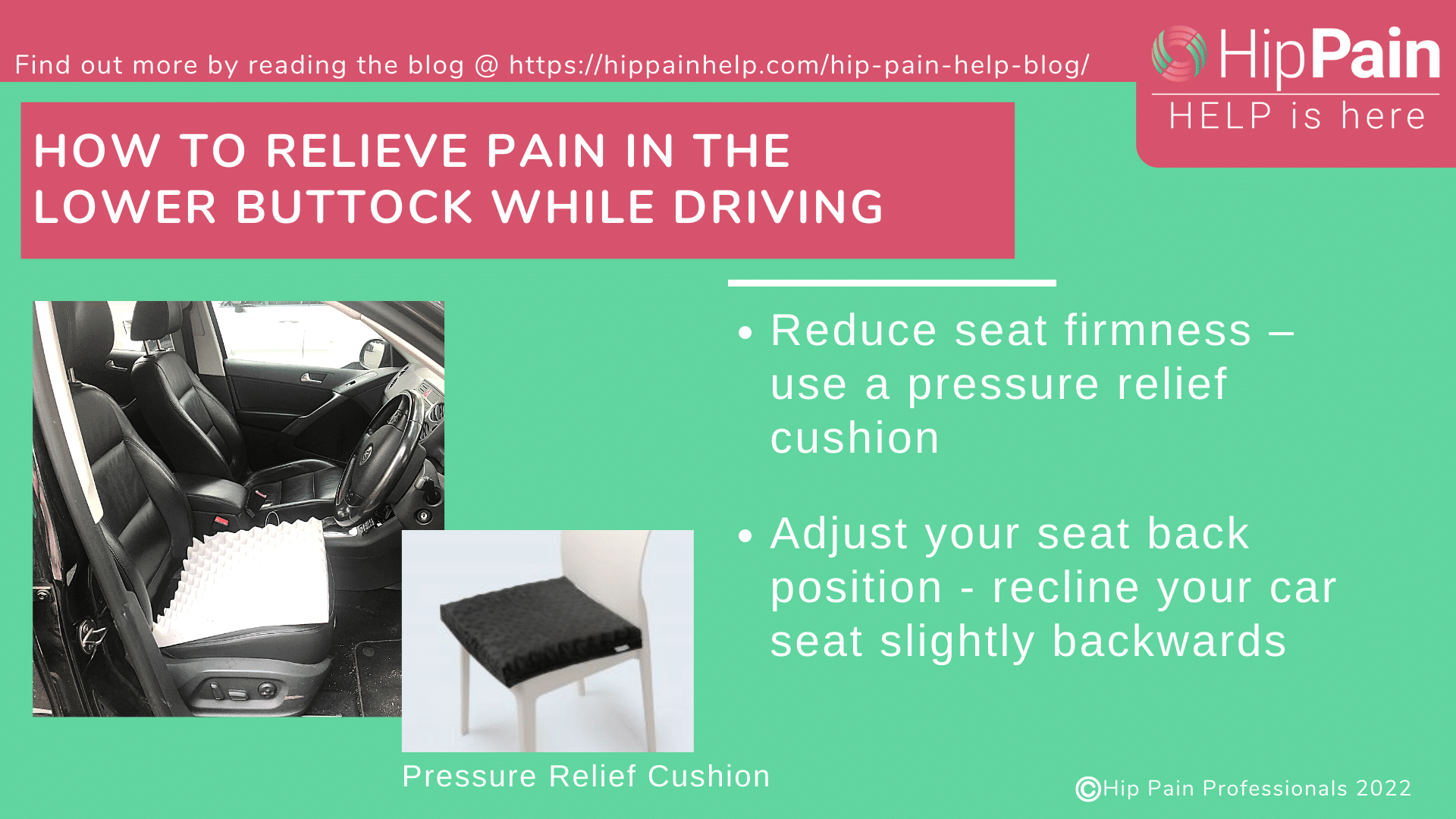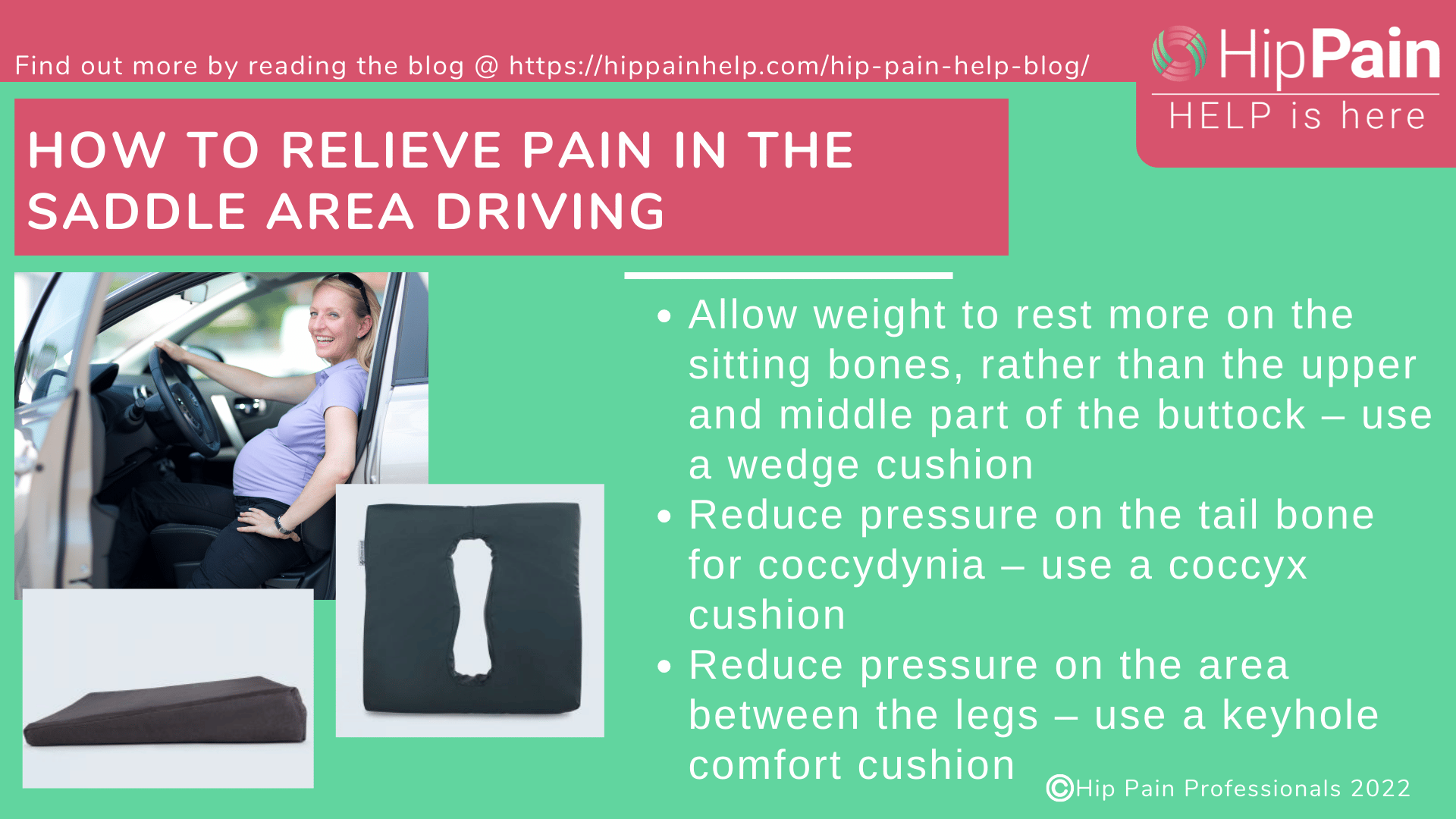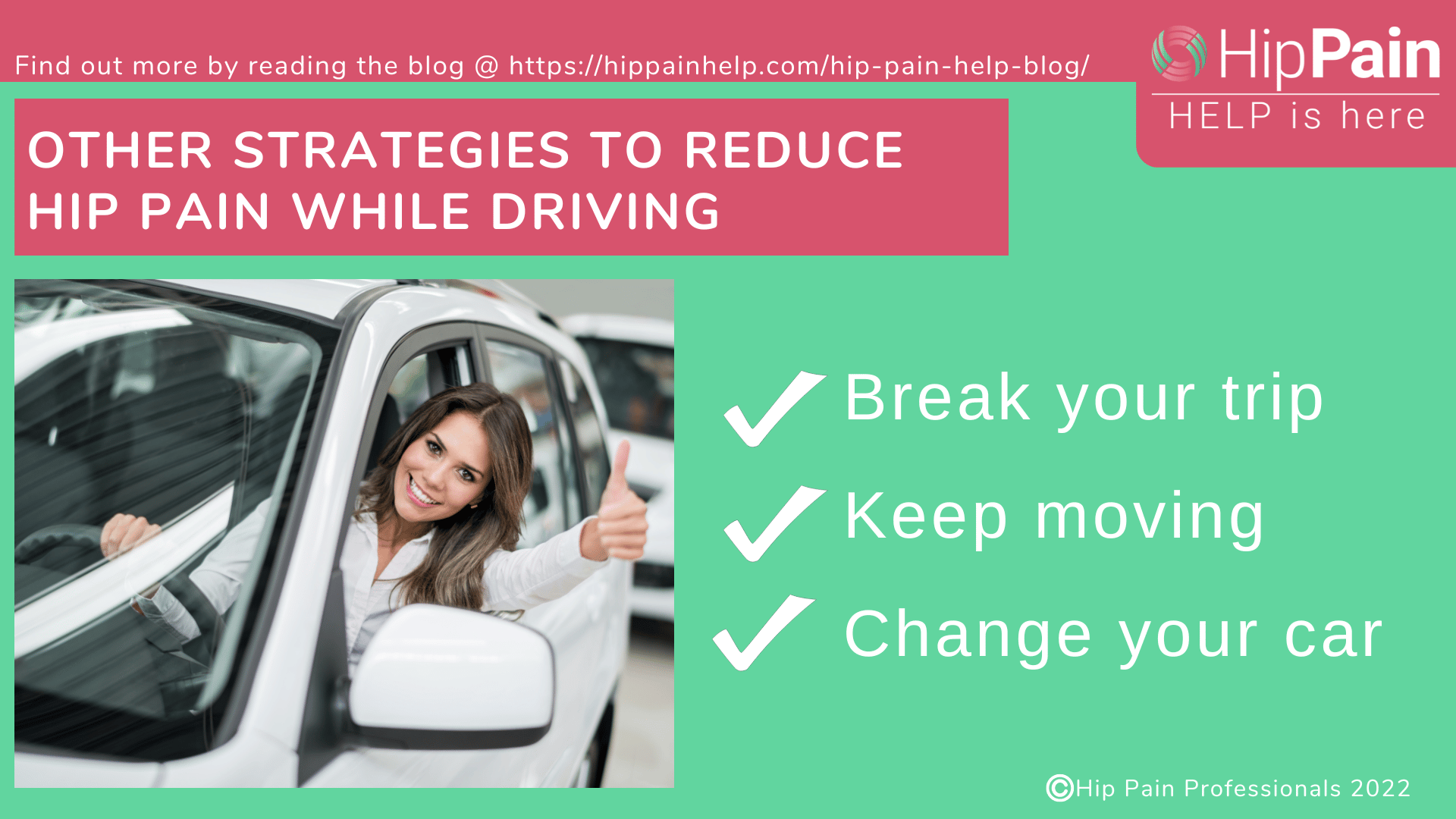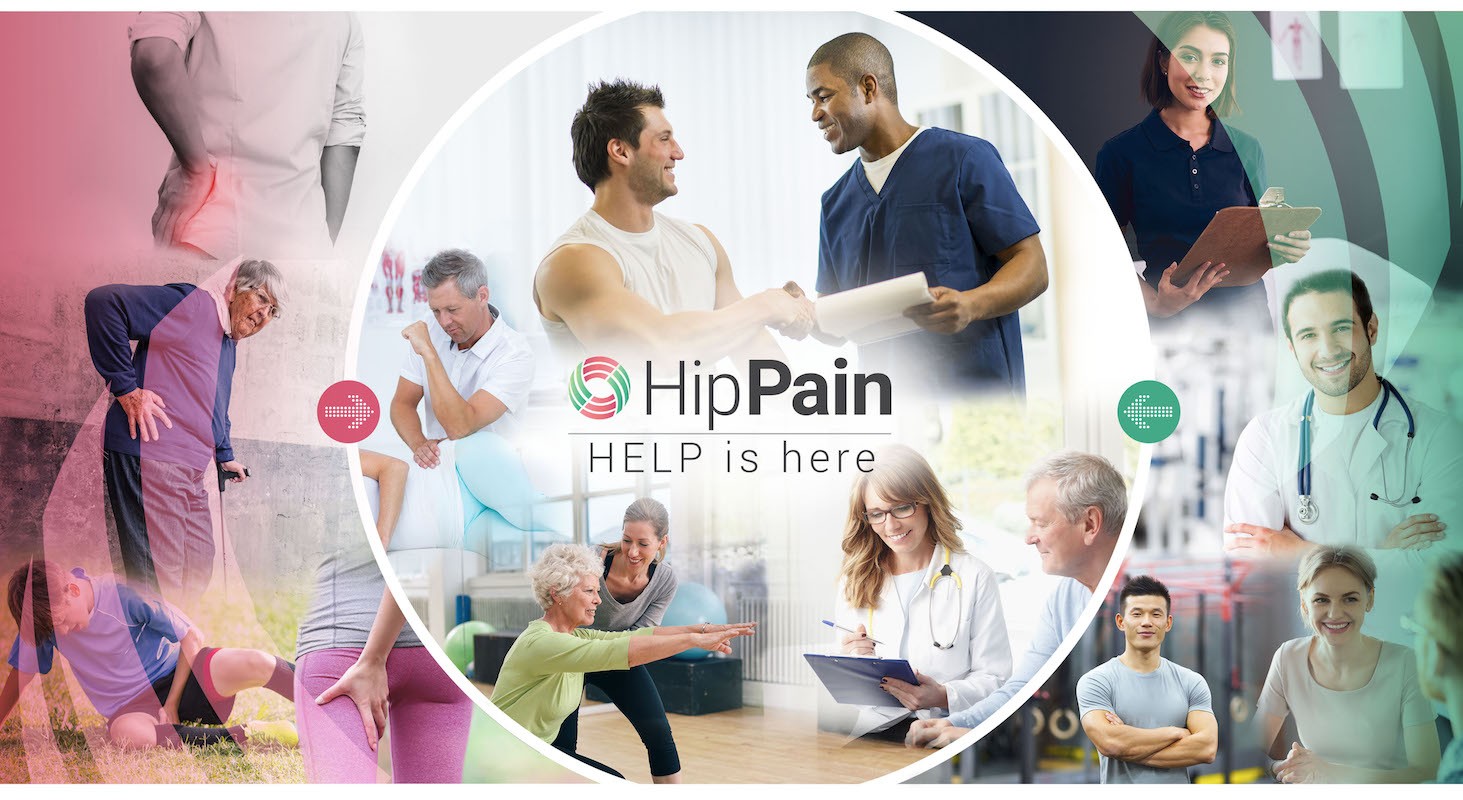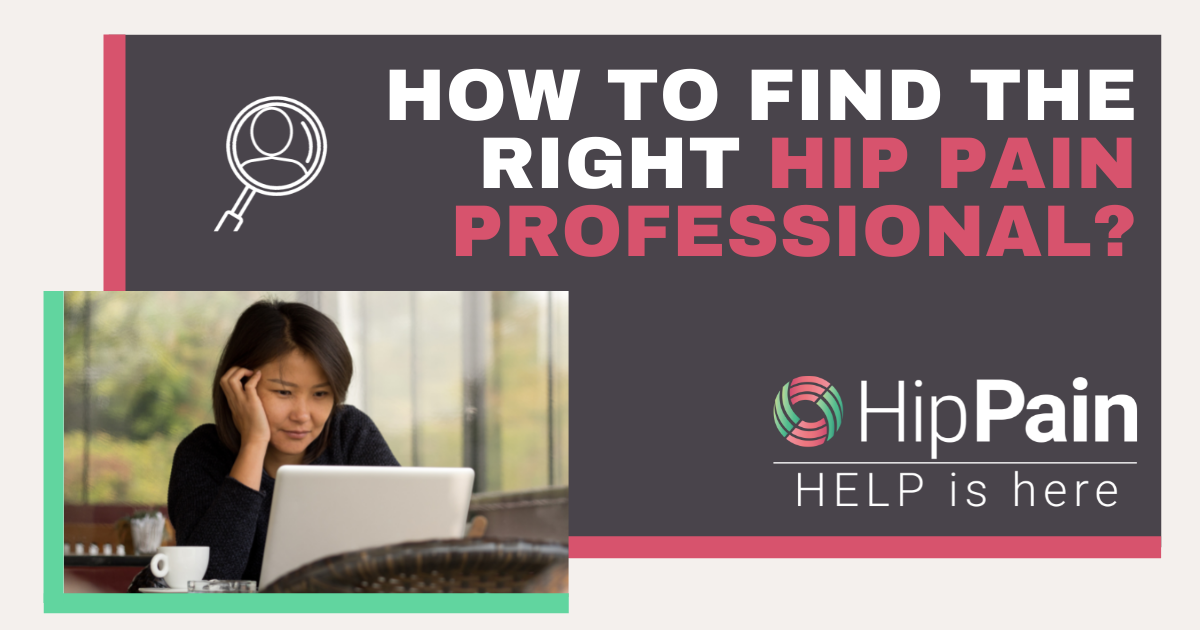Why pain may occur over the outside of the hip driving
Sustained sitting can result in low back pain which in turn can refer to the outside of the hip. It may be that the position of sitting is a problem for the back. Or it may be that being in any position for a prolonged time, including sitting is the problem. Sitting is considered a “flexion” posture for the back. Lumbar disc issues may not like this very much. If the car allows a less upright back, more slouched type posture, this may further irritate the back, resulting in greater amounts of leg pain than felt.
Sitting is a more bent, or flexed position of the hip, meaning the thigh bone (femur) comes up closer to the trunk. Some hip joint issues, such as hip osteoarthritis, hip labral tears, FAI, and hip dysplasia can be irritated with this bent, or flexed, position. Although these typically result more in pain at the front of the hip, pain at the side of the hip can also occur
Greater trochanteric pain syndrome, gluteal tendinopathy, and trochanteric bursitis are different terms used for pain over the greater trochanter, the bone at the top of the outside of the thigh bone (femur). They involve possibly the gluteus medius muscle and tendon, the gluteus minimus muscle and tendon, and the trochanteric bursa. Sitting places these structures under more compression as they pass over the side of the hip. Sustained sitting can eventually result in pain, or pain when going to stand after sitting.
Bucket-scalloped seats, meaning car seats that wrap up around the hips at the sides can also put pressure on the outside of the hips. The car seat on this occasion can put direct pressure on the tendon, bone, and bursa at the side of the hip, resulting in pain.



